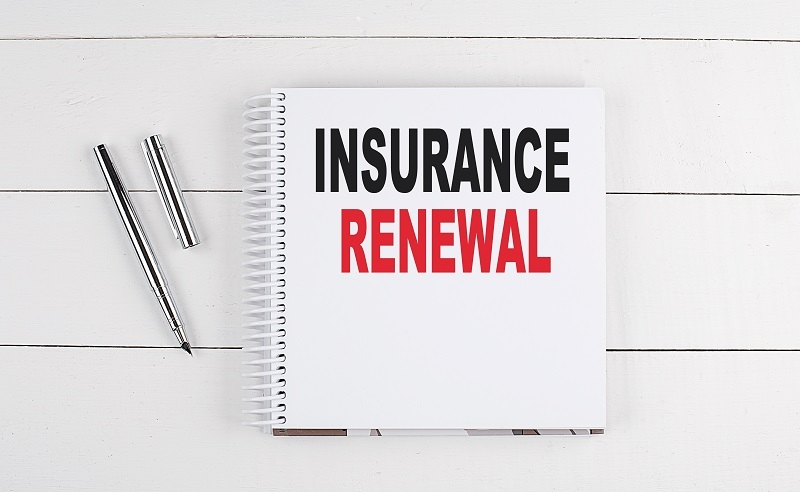
It is always a good idea to take a few moments to evaluate your policy during the renewal process. Careful review of your policy can significantly impact your savings and financial protection. The policy renewal checklist is designed to establish a system that helps you actively engage in the renewal process, rather than taking a passive approach, such as simply renewing without reading everything, and protect you from auto-renewal traps. If you understand how to determine what to review when renewing coverage, such as how to change coverage limits, you can better adapt your policy to the changes in your life. It’s helpful in actively comparing renewal quotes and looking for renewal discounts, as you may save money renewing coverage with a different company while maintaining essential types of coverage in your plans.
We discuss the process of renewing coverage, whether it is for home, auto, health, or life insurance. Use this reference guide to help guide you through the renewal process. Review the step-by-step checklist to help you renew smartly, remain protected, and update your policy.
A policy renewal checklist serves as your personal guide to review coverage and discover opportunities for savings while ensuring it meets your current needs. Companies typically determine renewal terms well in advance of the renewal, and it is easy for many policyholders to overlook these terms, resulting in the loss of better rates and benefits.
The benefits of using a renewal checklist are:
Without the checklist, it is more likely that essential updates regarding life changes, new possessions, and state regulations will be overlooked when evaluating your insurance coverage.
Before agreeing to another policy term, it is essential to know what to review before renewing a policy. To ensure continued appropriate coverage at a competitive premium, check:
Periodically reviewing these items helps ensure the insurance continues to provide the level of protection you want without paying for coverage you do not need.
Your financial circumstances or possessions may have changed since you last bought the policy. Therefore, knowing how to change your coverage limits during renewal is essential to ensure continuous protection.
Here are the steps to alter coverage:
For example, if you purchase new appliances for the home that are worth more than your previous rate, or you just bought a new car, you shouldn't keep the coverage limits the same; instead, you should increase your limits and review the new limits with your insurance carrier to confirm you have adequate coverage.
Don’t accept your current insurer’s first renewal offer before exploring quotes from other providers. Even minor differences in premiums can save you hundreds of dollars each year.
To effectively review quotes when you renew:
Many customers still believe that it is best to remain with the same company. However, as a consumer, you have the opportunity to weigh your options by simply comparing quotes, allowing your premiums to stay competitive.

The renewal period also represents an opportunity to take advantage of renewal discounts, which can lower your premiums. Many insurers offer discounts on renewals to loyal customers, those with a history of safe driving, and those holding multiple policies.
Here are some of the most common types of renewal discounts:
To maximize your discount, could you please ask your insurer which ones apply to your situation and ensure they are included in your renewal quote?
Automatic renewals can provide a level of convenience, certainly, but they can also lead to increased premiums and outdated policies. Knowing how to avoid auto-renewal contracts is vital to making the most of your insurance dollars.
Helpful hints to avoid unwarranted auto-renewal are:
Too many policyholders forget to complete the task of reviewing renewal notification details and ultimately pay inflated rates. Make it a point to have control over your renewal options instead of letting them happen automatically.
Over time, some policy add-ons may become unnecessary. Review optional coverages to ensure you’re not paying for benefits you don’t need.
Examples of optional add-ons include:
Eliminating unnecessary extras can lower your renewal cost while maintaining essential protection.
A policy renewal checklist should always include a review for coverage gaps or overlaps. For instance, if you hold multiple insurance policies, some areas may duplicate coverage while others might be underinsured.
To identify these issues:
Balancing coverage across all policies helps maximize protection without wasting money.
Marking your renewal date on a calendar ensures you never miss an important deadline.
Best practices:
These habits prevent accidental lapses in coverage and give you sufficient time to review and negotiate more favorable terms.
Modern insurers offer online portals and mobile applications to simplify the renewal process. These tools enable users to review policies, compare renewal quotes, and efficiently track claims.
Embracing digital management helps streamline your renewal process while ensuring accuracy and convenience.
Renewing your policy doesn’t have to be overwhelming. With this comprehensive policy renewal checklist, you’ll know exactly what to review before renewing insurance, how to change coverage limits, and how to compare renewal quotes effectively. By checking for renewal discounts and avoiding auto-renewal traps, you can confidently renew smarter and save more.
This content was created by AI